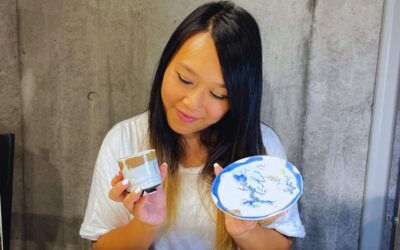Winter is coming, and so is the delicious seasonal food of Japan. This time, we want to introduce you to some of the most popular dishes to eat in winter in Japan. Although Japan lies on the edge of the temperate zone, it can get quite cold in the winter. The good news is that many Japanese dishes are specifically designed to keep you warm during the colder months.
Japanese people eat seafood, vegetables, and other dishes containing soy sauce or miso paste in winter to stay warm and healthy. So, what should you eat in winter in Japan? Let’s take a look at 10 common ingredients found in a typical Japanese kitchen during the cold season.
Goodies to Eat in Winter in Japan
1. Oysters

Oysters are a popular dish that can be enjoyed all year round in Japan. Known as one of the most delicious foods on earth, oysters are usually classified as bivalves. They can be served raw on the half shell, cooked (steamed, baked, fried), or served in a variety of sauces. How oysters are eaten often depends on the region. For example, in Hiroshima Prefecture, oyster hotpot (kaki no dotenabe) is a very popular dish.
During winter in Japan, oysters are often eaten raw (called namagaki), but in spring, they are more commonly cooked with soy sauce and spring onions, served over rice. Only the freshest oysters can be eaten raw.
2. Crab

One of the most popular winter dishes in Japan is crab. It is a long-standing Japanese tradition to eat crabs in winter, and it is believed this began in the Meiji era when fishermen would catch crabs for New Year’s celebrations.
The most common way to eat soft-shelled crabs is boiled in soy sauce and sake with green onion and ginger. Other ways of enjoying crab include crab hotpot and crab miso.
Crab hotpot involves cooking crab in a nabe, a thin dashi stock, with ponzu sauce added. This dish is warm and flavourful, making it perfect for winter. Crab miso, which may sound unusual, involves collecting crab miso and crab meat in the shell, seasoning it with miso or sake. This rich-tasting dish pairs wonderfully with rice and sake.
3. Mikan

Mikan is a type of mandarin orange that is widely eaten in winter in Japan. Seedless with a thin skin, mikan originated in China but has been popular in Japan since the 15th century. Its sweet taste makes it a comforting snack during Japan’s cold season.
Mikan is often eaten raw, but it can also be used in cooking. In Japan, mikan is sometimes paired with chilli pepper to create a dish called “chilli mikan.” You can find canned mikan fruits in convenience stores and supermarkets across Japan, making it an easy dessert after a salty meal.
In many parts of Japan, mikan trees are considered sacred and are never cut down due to a local legend. Most mikans come from the Wakayama and Ehime prefectures.
4. Daikon

Daikon is a large, white radish with a slightly sweet flavour, often enjoyed during the winter months in Japan. It grows in winter, earning it the nickname “winter daikon.” There are two main types of daikon in Japan—one used for cooking and the other for pickling.
In Japanese cuisine, daikon is often stir-fried with fish or meat, added to soups, or included in sushi rolls or rice balls. It is one of the most commonly cooked vegetables during winter in Japan. Additionally, there is a tradition of gifting radishes for birthdays in Japan.
5. Buri

Buri, a Japanese yellowtail, is a quintessential winter seafood in Japan. Slightly different from hamachi (farmed yellowtail), natural buri swim long distances, resulting in fish oil of high nutritional quality. This fish is a seasonal favourite during winter, when its meat has a higher fat content.
Buri can be enjoyed as sashimi, grilled, or seared, and is sometimes served in miso soup. Its rich, oily texture makes it a highly sought-after dish in winter.
6. Fugu

Fugu, also known as blowfish, is famous for its appearance and its potentially deadly poison. The fish has jagged teeth and a round shape. Because it contains a neurotoxin, only qualified chefs are allowed to prepare it in Japan.
Fugu has a unique flavour and is enjoyed for its crunchy texture as sashimi. When fried, its meat becomes plump and sweet. Fugu is often cooked in nabe, where its taste enriches the broth, making it a popular winter dish.
7. Shirako

Shirako, one of the more unusual winter delicacies in Japan, is fish semen extracted from mature fish milts. This dish, with a creamy texture and rich flavour, is a rare treat, typically in season from December to February.
There are several ways to eat shirako: raw with ponzu sauce, fried as tempura, added to nabe, or in miso soup. Though not for everyone, shirako is a unique winter dish worth trying in Japan.
8. Oden

Oden is another popular winter food in Japan. It is a light broth seasoned with soy sauce and mirin, served with various ingredients such as eggs, tofu, konnyaku (a jelly-like cake made from potato starch), and daikon.
Though Oden is eaten year-round, it is particularly popular during winter. It can be found everywhere, from convenience stores to izakayas and speciality Oden restaurants.
9. Nabe

Nabemono is a general term for hot pot dishes in Japanese cuisine. The word ‘nabe’ derives from the verb ‘nabu,’ meaning “to boil.” Nabe can be made by simmering ingredients in a pot. The ingredients are cooked over a heat source, typically gas or electric stove but occasionally charcoal, and includes both raw and cooked food items which are dipped into the broth while eating.
Two common types of nabe include Mizutaki and Yosenabe. Mizutaki consists mainly of chicken and vegetables. Yosenabe, on the other hand, contains seafood such as fish and shellfish.
The preparation process is not complicated at all. All it requires is some chopping and boiling water to cook the meat or seafood. For Mizutaki, the vegetables need to be diced up before cooking them with the broth and chicken pieces in a pot for about 10 minutes or so before serving it on the table with rice. For Yosenabe, ingredients like fish, shrimp, scallops, octopus, and lobster or crab meat are boiled in hot soup stock before serving.
It is an easy dish to cook at home and also a great option when dining out in Japan. It is one of my personal favourites when eating with a big group of friends.
10. Steamed Buns

Winter is the perfect time to enjoy traditional Chinese steamed buns, which are readily available in Japan. The classic pork bun, with its sweet, fluffy dough and filling of pork and vegetables in gravy, is a popular choice.
You can find Chinese buns at convenience stores and food stalls across Japan. They are a quick and tasty way to warm up while exploring the streets in winter.
Savour the Best of Winter in Japan
Winter in Japan is more than just cold weather—it’s a season filled with comforting and flavourful dishes that warm the body and soul. From the fresh taste of seafood like oysters and crab to the sweet simplicity of mikan, the variety of food available during the colder months is remarkable.
So, be sure to enjoy traditional favourites like nab, as well as unique delicacies like shirako. There’s always something special to eat in winter in Japan! Embrace the season by exploring these delicious offerings and experience Japan’s winter cuisine at its best.








